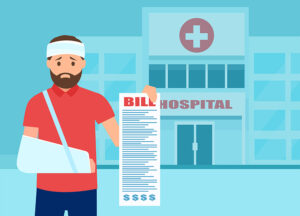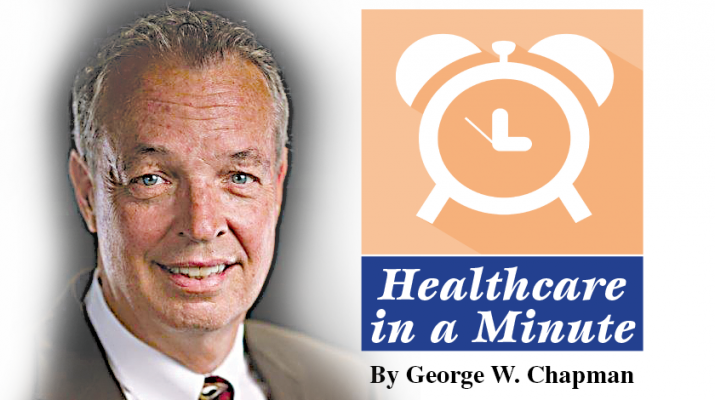19 hospitals closed last year due to bankruptcy. Another 630 are on the brink of financial disaster this year. Meanwhile, insurers post strong profits
First, on the provider side, things are bleak. Nineteen hospitals closed last year due to bankruptcy. Industry experts estimate 630 hospitals are on the brink of financial disaster this year. Two hundred of those shaky hospitals serve rural or isolated populations. The pandemic hit nurses and physicians hard. We are entering a veritable crisis in nursing. The ANA estimates we will need 275,000 more nurses between now and 2030. The nursing shortage is worse than any other profession. The AMA estimates we will need between 38,000 and 124,000 more physicians over the next 12 years. And to make matters worse, the US population is aging. But the news isn’t all bad. The top six insurance companies made more than $41 billion last year. United Health Group lead the pack with $20.6 billion. The next five were Cigna $6.7 billion; Elevance, $6 billion; CVS, $4.2 billion; Humana, $2.8 billion; and Cetene, $1.2 billion.
CMS Fining Hospitals
 As if things aren’t difficult enough for financially struggling hospitals, Centers for Medicare & Medicaid Services (CMS) is seemingly piling it on by stepping up enforcement of the requirement for hospitals to post prices for several select procedures online for the sake of transparency. Cash strapped hospitals are being fined hundreds of thousands of dollars. By posting prices, consumers can (supposedly) shop around for CT scans, surgery and other procedures. There are problems with the price posting requirement. First, most of us, if we know it or not, are in an organized hospital-centric healthcare system. Your physician is going to refer you to providers within the system, limiting your choice of a hospital or CT scan. Although your insurance may allow you to go to any participating provider (shop around), for the sake of continuity you are better off staying within your system. Second, 90% of us are insured so none of us will ever pay the full price. It is irrelevant. Your commercial insurer has negotiated what it will pay on your behalf. Medicare and Medicaid have set what they will pay on your behalf. Your copay (or deductible) is determined by your insurer. We have all seen an “explanation of benefits” letter from our insurer indicating the hospital “priceorcharge” and what the insurer ultimately paid. The difference is typically astounding. Third, unlike a car or article of clothing, a hospital price has nothing to do with quality. It is a meaningless number so shopping around based on price is a fool’s errand. Out-of-pocket expenses are the price we pay. Most hospital billing offices can give you a good idea of what you will pay out of pocket based on your insurance.
As if things aren’t difficult enough for financially struggling hospitals, Centers for Medicare & Medicaid Services (CMS) is seemingly piling it on by stepping up enforcement of the requirement for hospitals to post prices for several select procedures online for the sake of transparency. Cash strapped hospitals are being fined hundreds of thousands of dollars. By posting prices, consumers can (supposedly) shop around for CT scans, surgery and other procedures. There are problems with the price posting requirement. First, most of us, if we know it or not, are in an organized hospital-centric healthcare system. Your physician is going to refer you to providers within the system, limiting your choice of a hospital or CT scan. Although your insurance may allow you to go to any participating provider (shop around), for the sake of continuity you are better off staying within your system. Second, 90% of us are insured so none of us will ever pay the full price. It is irrelevant. Your commercial insurer has negotiated what it will pay on your behalf. Medicare and Medicaid have set what they will pay on your behalf. Your copay (or deductible) is determined by your insurer. We have all seen an “explanation of benefits” letter from our insurer indicating the hospital “priceorcharge” and what the insurer ultimately paid. The difference is typically astounding. Third, unlike a car or article of clothing, a hospital price has nothing to do with quality. It is a meaningless number so shopping around based on price is a fool’s errand. Out-of-pocket expenses are the price we pay. Most hospital billing offices can give you a good idea of what you will pay out of pocket based on your insurance.
Socialism’ in Healthcare

If a country (England, Canada, France, Germany, Sweden, etc.) provides universal care for all, critics decry it as socialism. In our country, critics call Medicare and proposed “Medicare for all” plans nothing more than socialism. So, is Medicare still socialism when it is managed by a commercial carrier? Humana made $2.8 billion last year. Virtually all their business and profits were derived from running Medicare and Medicaid plans. United made more than $20 billion last year. One third of their business (and profit) was derived from Medicare and Medicaid plans. We pay into Medicare via payroll taxes all our life. Then, we are still faced with paying more via deductibles, copays and coinsurance. Now commercial insurers are raking in huge profits. But at least it’s not “socialism!”
Artificial Intelligence
 I discussed this briefly last month. In various studies, consumers are very satisfied with AI or chatbots. Even a study recently published by JAMA (Journal of the American Medical Association) concurs. According to the study, chatbots answered more patient queries quicker and with empathy when compared to written physician notes. But instead of replacing physicians, the study proposes that chatbot + MD = better care. In fact, AI should assuage the projected physician and nurse shortage by freeing them up to focus on more critical cases.
I discussed this briefly last month. In various studies, consumers are very satisfied with AI or chatbots. Even a study recently published by JAMA (Journal of the American Medical Association) concurs. According to the study, chatbots answered more patient queries quicker and with empathy when compared to written physician notes. But instead of replacing physicians, the study proposes that chatbot + MD = better care. In fact, AI should assuage the projected physician and nurse shortage by freeing them up to focus on more critical cases.
Social Media
 The American Psychological Association has developed science-based guidelines regarding social media use by teens. There has been a surge in depression, anxiety and loneliness among teens and young adults attributable to social media. The guidelines are directed primarily at teens, parents, counselors and teachers. The APA recommends teens should receive training on the use of social media and parents should monitor social media use and limit screen time.
The American Psychological Association has developed science-based guidelines regarding social media use by teens. There has been a surge in depression, anxiety and loneliness among teens and young adults attributable to social media. The guidelines are directed primarily at teens, parents, counselors and teachers. The APA recommends teens should receive training on the use of social media and parents should monitor social media use and limit screen time.
Mifepristone
 In a week (as of this writing in early May), a federal three judge panel will determine the fate of the medical abortion pill. All three- judges have a history of ruling against abortion access or have stated an anti-access position. Most national polls and surveys reveal the vast majority prefers that mifepristone remain available on the market.
In a week (as of this writing in early May), a federal three judge panel will determine the fate of the medical abortion pill. All three- judges have a history of ruling against abortion access or have stated an anti-access position. Most national polls and surveys reveal the vast majority prefers that mifepristone remain available on the market.
Medical Debt Relief
I have written about the fact that medical debt is the leading cause of bankruptcy in our country. The good news is that medical debt can no longer be considered by credit-rating companies. A reader of my column forwarded me some more good news. A nonprofit called RIP Medical Debt can help. Its website address is https://ripmedicaldebt.org.
 George W. Chapman is a healthcare business consultant who works exclusively with physicians, hospitals and healthcare organizations. He operates GW Chapman Consulting based in Syracuse. Email him at gwc@gwchapmanconsulting.com.
George W. Chapman is a healthcare business consultant who works exclusively with physicians, hospitals and healthcare organizations. He operates GW Chapman Consulting based in Syracuse. Email him at gwc@gwchapmanconsulting.com.

